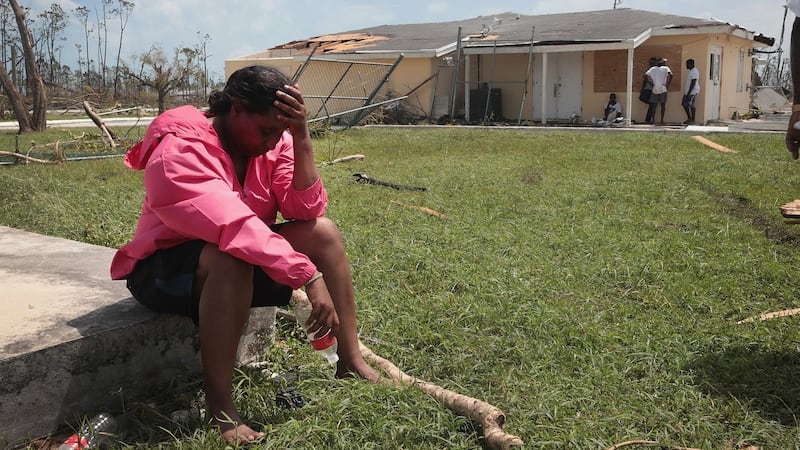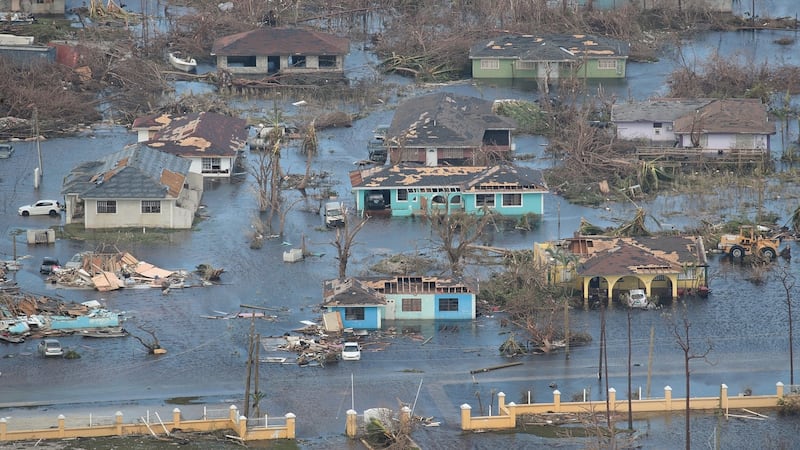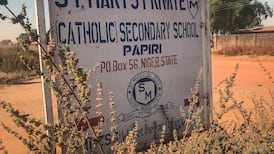The nearly deserted rain-lashed streets of Charleston, South Carolina, began to disappear beneath water on Thursday as Hurricane Dorian churned a few dozen kilometres offshore after reducing parts of the Bahamas to rubble.
The water pooled a few inches deep in streets near the centuries-old waterfront. In certain low-lying blocks, it rose to a foot or more, as high tide approached and forecasters warned of storm surges of up to 2m (8ft).
John Rivers (74) and his three children were among the few to be seen in the streets on Thursday. They cleared drains of branches, leaves and debris, using a shovel, a rake and their bare hands.
“As it’s low tide, we’re giving the water somewhere to go,” Mr Rivers said, sheltering temporarily from the driving rain and gusts of wind under a covered walkway. His daughter Caroline (12) pulled off her rubber boots one at a time, emptying a stream of water from each.
“I see this as a good life lesson for my kids,” Mr Rivers said. “If we can help reduce the flooding, then we’ve done a good day’s work.”
Dorian was about 80km (50 miles) off Charleston on Thursday, wavering in strength between a Category 2 and 3 on the five-step Saffir-Simpson wind scale. It was forecast to possibly make landfall in North Carolina late Thursday or early Friday.
Life-threatening storm surges and dangerous winds were possible in much of the coast of South Carolina, North Carolina and Virginia, the National Weather Service said.
Dorian whipped up at least three tornados in the region, officials said. One in North Carolina damaged scores of trailers in a camp ground in Emerald Isle, but no one was injured, North Carolina’s News & Observer reported.
Governors in the region declared states of emergency, closed schools, opened shelters, readied national guard troops and implored residents to take warnings seriously, as fresh images of the devastation wrought by the storm in the Bahamas earlier this week continued to circulate in the media.

At least 70,000 Bahamians needed immediate humanitarian relief after Dorian became the most damaging storm ever to hit the island nation.
The United Nations estimated more than 76,000 people were in need of humanitarian relief. The UN World Food Programme (WFP) said it bought eight metric tonnes of ready-to-eat meals and was organising an airlift from Panama of storage units, generators and prefab offices for two logistics hubs, as well as satellite equipment for emergency responders. The UN agency has allocated $5.4 million to a three-month emergency operation to support 39,000 people, said Hervé Verhoosel, senior WFP spokesman.
Dorian was rated a Category 5 hurricane when it killed at least 20 people in the Bahamas. Authorities expect that number to rise, Bahamanian prime minister Hubert Minnis said at a news briefing, as retreating floodwaters revealed the scope of destruction.

In the Carolinas alone, more than 900,000 people had been ordered to evacuate their homes. It was unclear how many did so.
In Kitty Hawk, at the top of North Carolina’s Outer Banks, Linda Barnhart decided to ignore the order and board up the windows of her oceanfront cottage before heading to another home of hers a short distance inland. Some of her neighbours crowded a hardware store, buying fuel containers and plywood.
At least four storm-related deaths have already been reported. Three people died in Orange County, Florida, during storm preparations or evacuation, according to the Orange County mayor’s office. In North Carolina, an 85-year-old man fell off a ladder while barricading his home for Dorian, the governor said.
More than 210,000 homes and businesses were without power in South Carolina and Georgia early on Thursday, according to local electric companies. – Reuters













